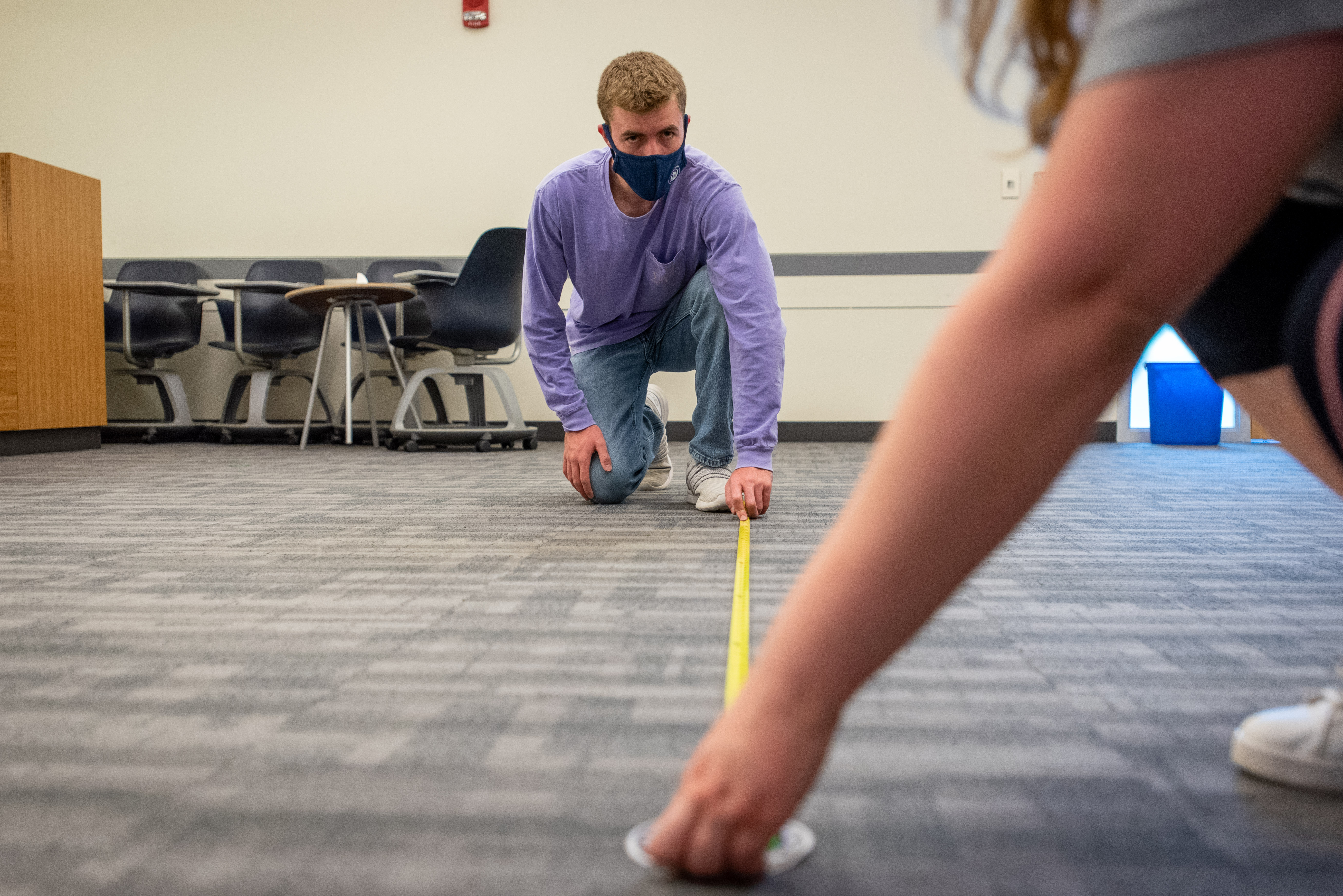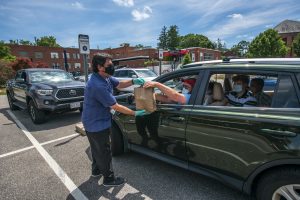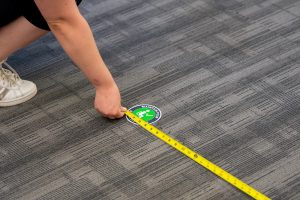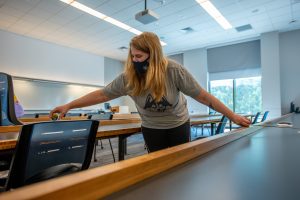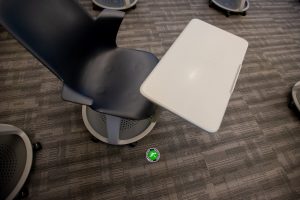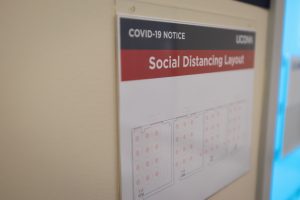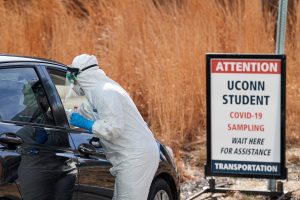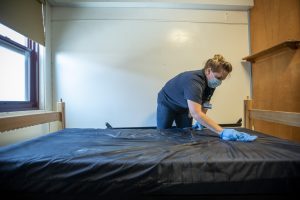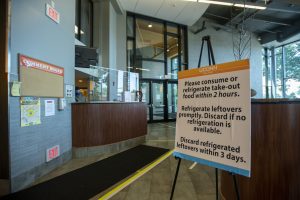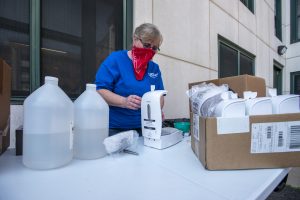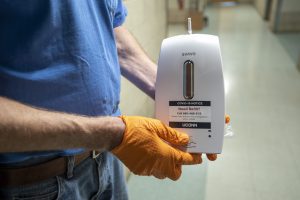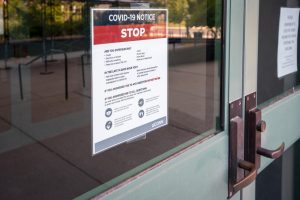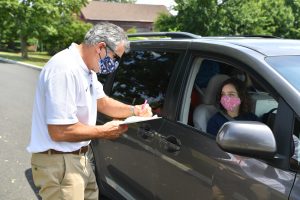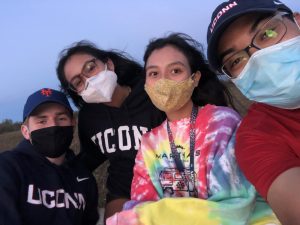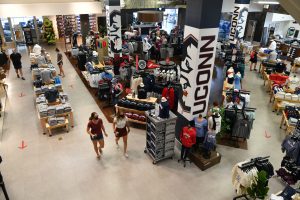The University of Connecticut this time of year is normally filled with excitement for new beginnings: students and faculty members preparing for new classes, sports teams returning to practice, marching band rehearsal heard for miles around , and droves of families having just moved their new Huskies into student housing.
This year, though the excitement is still palpable, this year there are no groups of athletes running around campus, no drum cadences traveling through the air, fewer students arriving to unload their dorm supplies, and classes will either look very different in person or be conducted entirely online.
For months leading up to the first day of classes on Monday, Aug. 31, faculty and staff have been busy, adjusting and rethinking as circumstances change, all in a massive effort to ensure the mission of education continues despite the pandemic. While this semester won’t be quite like any other in the 139-year history of UConn, that commitment is a steadfast reminder that, whatever exterior events may be, teaching, research, and the student experience remain the heart of UConn.
Life on Campus
Jailynn Vidro ‘21 (CLAS) is one of the many resident assistants who will be supporting the over 5,000 students living on campus this semester. Vidro says RAs will be helping to enforce mask warning, distancing, and other UConn Promise policies, along with working with students virtually rather than in person.
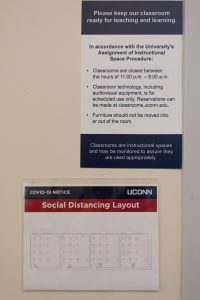
“Everyone, including myself, will be wearing a mask every time they are outside of their room. If students are caught not wearing a mask, or are caught with too many guests, then it will need to be addressed,” she says.
Vidro says she hopes safety is taken seriously, given the nature of the pandemic.
“I am really hoping everyone is being sanitary and wearing their mask. Throughout the year, I am mostly at UConn, therefore I do feel more of a connection to the campus than I do to my home city [New Haven]. I feel like most of my life is here now, so for it to shut down and having to go back home, especially with online courses, that would be tough,” she says.
For those living on campus, dorm rooms will serve not only as a place for sleep, rest, and study, but also a classroom, and in Vidro’s case, a workplace.
“Duty shifts will be conducted from our dorms where many interactions with our residents will be done virtually, whether on Zoom or through phone,” she says. “I tried to make my room as comfortable as possible by bringing things from home to give it a more comforting vibe. I am working multiple jobs from my room, one of which will be as a residential assistant, so it’s definitely going to be interesting being at one job, while also at my other job. Other than that, I am really just going to be doing what I usually do every semester, which is work hard in my courses and try to stay on top of my work as much as possible.”
Vidro says that during RA training the lines for dining halls were long, and is hopeful that as more students arrive on campus and more dining halls open, that the lines will decrease as everyone gets used to the new take-out only system. This video details what on-campus dining will be like this semester, including extended dining hall hours to try to reduce wait times.
Living off Campus
For students living off campus, like Katherine Kuegler ’23 (CLAS), one urgent task is making sure an area in the home can be set up and designated for schoolwork.
“Part of the struggle for me being home [this past spring] was that my mindset and focus was a lot harder to come by in my house,” she says. “I’m trying to figure out a space to go to take exams because I had a hard time concentrating and getting in an exam headspace when I was sitting in the same spot I did my homework and attended zoom lectures.”
Kuegler is honest about the new semester and the challenges posed by the pandemic and distance learning: “I’ll do my best with this format that we’ve been given, and I don’t plan to return to campus in the spring either, at least not living in the dorms because I don’t feel that it is a safe decision for students who have the option to commute like I do.”
Kuegler is hopeful everyone will be more accustomed to the online format and this semester will go smoothly.
“Last year, there was a real disconnect between some of my professors and the class because of the learning curve that comes with teaching online,” she says.
Learning and Teaching From a Distance
Though many find distance learning challenging, during this transitional time Associate Professor of Educational Leadership Sarah Woulfin says it’s important that everyone approach the semester with a sense of understanding,
“Folks are going to be in really different places in terms of their own schedules and situations,” she says. “In the spring, a professor from another university posted an adapted syllabus for the COVID era, and one of the points was to have a class where we can get together for ‘intellectual nourishment,’ in his phrasing. I adapted that into my class as pillars for our work together. We’re here to learn, but know that there is a lot of other stuff going on in the world and our lives. So let’s be humane with each other, foster connection, and learn together during our time online.”
The ways courses will be conducted this semester are unlike any previous semesters, and regardless of mode of delivery, all courses will look different, says Desmond McCaffrey, Director of UConn Online from The Center for Excellence in Teaching and Learning (CETL).
Classrooms will look different, with signage for safe distancing and everyone, students, faculty, and staff, is required wear a mask. Some courses will be hybrids of in-person and online portions, or “split” schedules where students are divided into groups that attend class on different days.
For fully online classes, McCaffrey says students will interact synchronously (or some combination of synchronous and asynchronous scheduling) throughout the week with their faculty and fellow students online. Students will also make extensive use of the HuskyCT system o access content and materials, submit assignments, and interact using discussion boards and other online learning tools. A dedicated “keep learning” website has been developed to provide students with resources and tips about how to be an effective online learner, says McCaffrey.
Preparations for the fall semester were made using student feedback from the spring, and faculty members are prepared if the University is compelled to go fully remote prior to the Thanksgiving break, when the switchover to all-remote classes is currently scheduled.
Lauren Schlesselman, Director of Learning Initiatives and Educational Technologies at CETL, notes that laboratory courses pose an additional set of challenges for students and instructors, since labs are meant to be hands-on. Fortunately a variety of teaching modalities are being employed to meet the challenge.

“Some labs will still be conducted in-person, while others will be hybrid, distance, or online,” she says. “Although in some situations, students will not be able to handle the equipment themselves, they will be able to observe the instructor utilizing the equipment and talk through the lab experiment. Faculty have also found interactive simulation labs in which the students can participate. Additionally. faculty have created videos of the experiments for the students to view. Finally, some faculty will have distance learning students plan the experiment which the instructor will then conduct for them to obtain the data.”
New Beginnings in a New Era
“Nervous but excited” is how incoming first-year student RJ Streater ’24 (CLAS) describes starting his UConn journey during a pandemic. An important part of the UConn experience is meeting and making new friends, and Streater says one of the ways he is preparing for this semester is by establishing a core group of friends through online sources like the UConn Learning Community Instagram, Husky Wow (the public health learning community he’s a member of), online clubs, and chats for classes and groups around campus.
“I also have friends on campus already who are connecting me to new people and other clubs and trying to connect as best as possible. Especially with no physical orientation, it’s a very different world,” he says.
Along with building a strong support network — safely distanced, of course — Streater is hopeful he will be able to meet some professors in his department to gain some lab research experience.
Now that he is on campus, Streater plans find a quiet study spot or place where he will be able to unwind because, especially right now, that kind of restorative solitude is crucial.
“It is important to find balance,” he says. “Establish good study habits, eating habits, maintaining a social life, it’s important to find time to care for yourself. You’ve got to have hope in the midst of everything — with the pandemic, with racial injustice, and everything else going on right now — you have to have hope. I have faith in us, we’ll get through it.”
